Exploration of The Universe: The Sun
Exploration of The Universe The Sun
When you look up at the stars what do you see?
Most people just see a random collection of lights littering the heavens and think nothing of it. The others (like me) are transfixed. You can look for a lifetime and never grasp the true size and scale of whats out there.
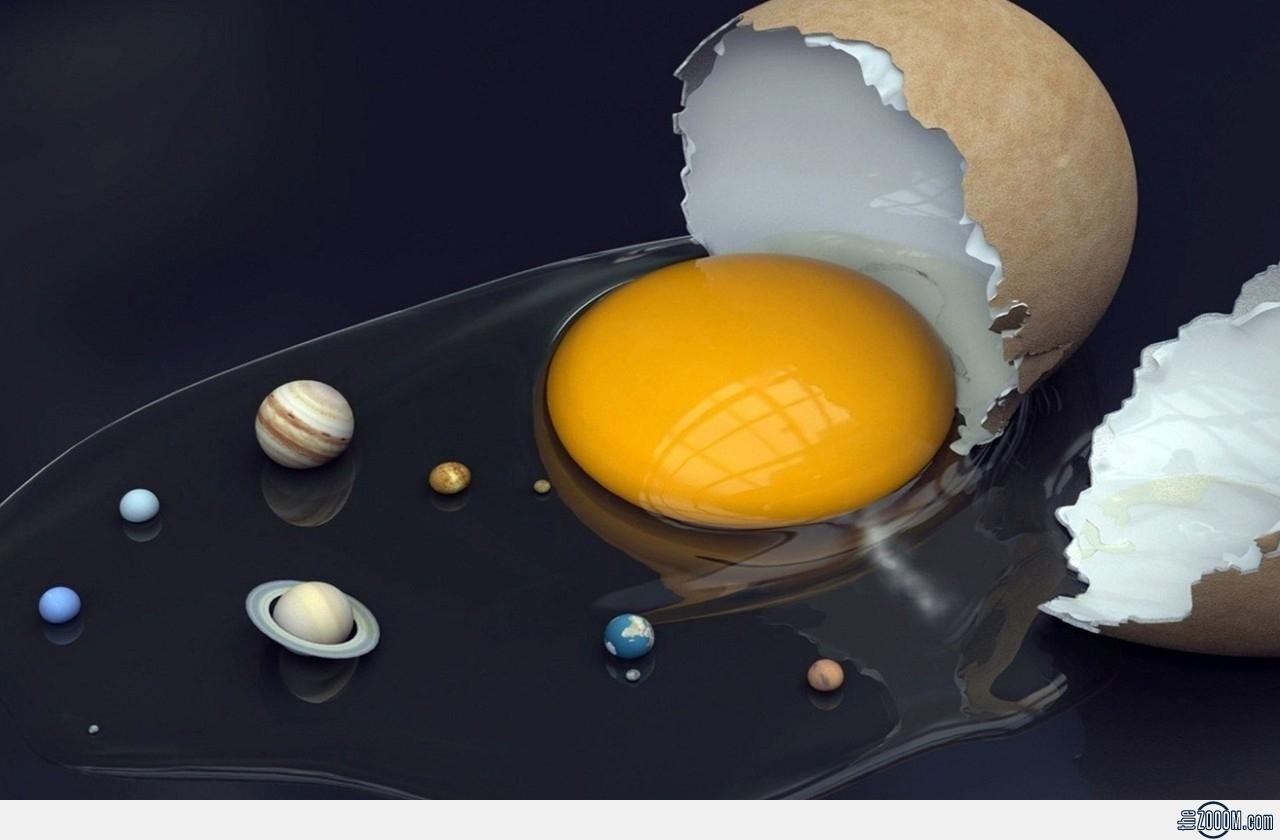
You can get tangled in trying to perceive the true nature of the universe as i did while studying for my masters in physics, but let us, for now, consider the closest fragments of this shattered web of understanding.
The Sun
It is obvious to state that the sun is important, who would state otherwise?
 But how was it created, how does it work?
But how was it created, how does it work?
I will answer these questions simply and not be one of those people that tries to shove complicated equations down your throat, or post them to appear clever.
So to get an idea of how the sun was created we have to find examples already in play. Luckily for us we have nebula, our star nurseries. Nebulae are collections of interstellar cloud or dust, hydrogen, helium and other ionized gases. These collections are much denser than the surrounding vacuum of space however much less dense than we would expect. If we had a nebular cloud the size of earth, the total mass of that cloud would exceed no more than a few kilograms. This seems incredible, the "very dense regions of space are in fact less dense then any vacuum created on earth!
The Orion Nebula is the largest in the field of view from earth, as shown below. Though not very visible to the eye, it covers an area in our sky twice the area of the moon.
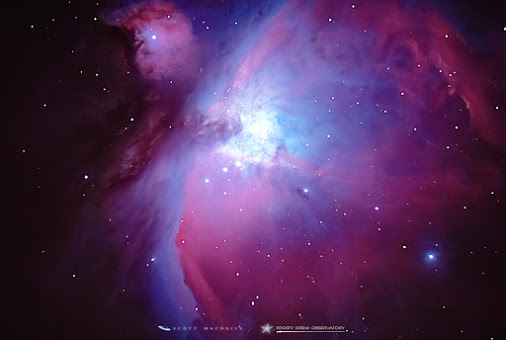
So now that we have dense regions of space we need to make stars. Now all we need is a shockwave or another disturbance that can disrupt the gaseous cloud. The most common of these are supernova and galactic arm shockwaves. A supernova is a star at the end of its life going out with monumental explosion and spiral arms in a galaxy are standing waves (density waves), much like a traffic jam. As cars slow down for a jam the cars behind them slow down. Then when the cars near the front of the jam, they speed up and leave the jam behind them. I should also mention that once a star has been created it can lead to the creation of other stars nearby. As the heliosphere (a shockwave created by the plasma radiating out from the sun) extends out it pushes against the interstellar medium, this creates a shockwave radiating out which could come across another gaseous region. The heliosphere expansion finally stop at whats called the "termination shock", which in our case is outside of plutos orbit.
Both of these disruptions cause areas of higher and lower density. This creates imbalances in the local gravitational field, with some areas experiencing a higher gravitational pull than the others. The high density areas collapse under their own gravity and the surrounding matter is pulled into those areas. Now there are various models of this considering accretion discs and conservation of momentum etc, but the outcome is that we have matter falling into a "gravitational well".
So the matter falls into a smaller and smaller space as the gravity pulls it in. This increases the pressure as the area gets denser and its temperature, much like a bicycle pump heats up as you put air in a tyre. Eventually the force of gravity and the pressure of the gas become equal and we get what is called "hydrostatic equilibrium", and the collapse stops.
So thats it! We've made... an exoplanet.
We missed one important point. What is the physical difference between a planet and a star? The idea of fusion. When the mass of collapsing material is large enough the pressure it applies to the center of the collapse causes the temperature rise to be extreme. For an example, the center of our sun exceeds 15 million degrees Celsius. At theses temperatures and pressures fusion takes place.
Fusion is simply the joining of two atoms to make a larger atom, the easiest and most relevant is hydrogen to helium. This is shown below in the "proton-proton chain".
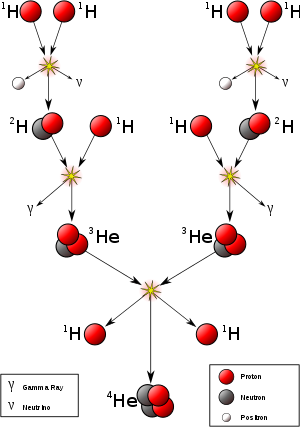
But where does the energy given off in fusion come from? The answer came in 1920 when F.W. Aston precisely measured the mass of a hydrogen atom as well as a helium atom, among others. He discovered that the mass of a helium atom (4 protons) was less than the mass of 4 hydrogen atoms (1 proton). Sir Arthur Eddington, an English astrophysicist took this and Einsteins famous E=mc^2 equation and gave us a theory.
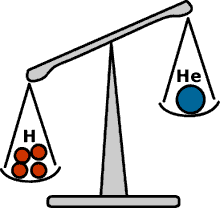
The energy given off from the sun is directly from the fusion of atoms where mass is released as energy. The result of this is that mass and energy are equivalent. An example of this is if you have an elastic band, and stretch it, you are putting energy into the band. This in effect means that the mass of the elastic band has increased, though by a very very small amount.
We have our source of energy, however this source is only available in within the first 24% of the suns radius i.e in the core. This is the only place hot and dense enough to allow fusion. The energy is transferred out through different layers of the sun to the solar photosphere where it radiates out as electromagnetic radiation and kinetic energy of particles.
So only a small amount of the sun will be available for hydrogen fusion, however don't worry as this "small amount" will still last just under 5 billion years.
What happens though when our star runs out of fuel? Unfortunately for us, the complete destruction of a habitable planet Earth. Though, most likely, we would already have achieved that a few billion years previous. We can hope that the human race has discovered some solution to travelling the gigantic distances involved in interstellar travel. Maybe with the creation of the EM drive, solar sails or cheating with a wormhole. If not, then the human race has a definite crispy expiration date with the suns death.
Anyway, so as the fuel in the suns core runs out the outwards pressure supplied by fusion drops and the sun will fall out of hydrostatic equilibrium. The various layers of the star will collapse inward until more hydrogen comes into the fusion zone. We can also get the fusion of other elements as the pressure gets larger in the core, commonly helium. So as the outer layers of the sun start to fuse hydrogen in a spherical shell around the core, the outward pressure explodes once more. However this time there are now fewer layers on top the fusion process so the pressure expands these layers out into the solar system. The result is a Red Giant.
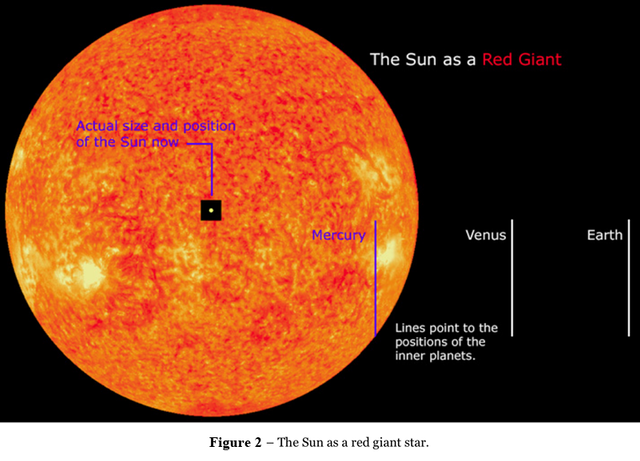
At this point the entire inner solar system will be fried to a crisp, poor mercury is completely swallowed by the expanding sun.
The future from this point for our sun, and other stars, depends entirely on the mass of the star. Some shrivel away to nothing while others undergo the most fantastic explosions in the entire universe and finally an unlucky few drop out of our understanding of physics and become incomprehensible singularities.

Any Questions on any physics please comment
Steem on!
I love seeing science posts like this on SteemIt!
People who follow posts like these and like art that explores natural phenomena might find this art giveaway (and a lot more to come) to be of potential interest:
https://steemit.com/art/@ztetrahedron369/contest-win-an-original-piece-of-art-by-zero-tetrahedron-369